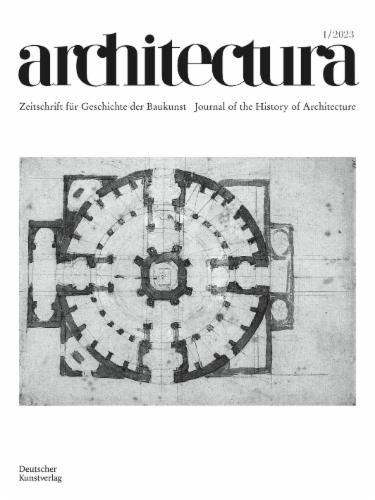
The Corners on the Wall
Katharina Palmberger
Aus der Zeitschrift: architectura
Online veröffentlicht:
01 Oct 2025
Zusammenfassung
In the Crusader period, the façade of Jerusalem’s Holy Sepulchre Church underwent a complete reconstruction, blending European, local, contemporary, and historical influences. Among the most notable features is the frieze delineating the two floors. Heavily inspired by Roman architecture, it has a highly unusual design: rather than following a straight horizontal course, it forms corners in the middle of the wall surface.
This 12th century copy of a Roman frieze introduced an element of historicity to the Crusader kingdom’s meticulously crafted agenda of legitimisation, depicted on the façade of the era’s most important church. I argue that by introducing the corner as a clearly contemporary take on Roman style, a genuinely medieval outline was created drawing heavily on Byzantine period references. By way of the cornice creating corners, this paper takes on the story in stone created by the Crusaders as their legitimisation agenda.
In the Crusader period, the façade of Jerusalem’s Holy Sepulchre Church underwent a complete reconstruction, blending European, local, contemporary, and historical influences. Among the most notable features is the frieze delineating the two floors. Heavily inspired by Roman architecture, it has a highly unusual design: rather than following a straight horizontal course, it forms corners in the middle of the wall surface.
This 12th century copy of a Roman frieze introduced an element of historicity to the Crusader kingdom’s meticulously crafted agenda of legitimisation, depicted on the façade of the era’s most important church. I argue that by introducing the corner as a clearly contemporary take on Roman style, a genuinely medieval outline was created drawing heavily on Byzantine period references. By way of the cornice creating corners, this paper takes on the story in stone created by the Crusaders as their legitimisation agenda.
Weitere Artikel in diesem Heft:
architectura Hefte
Volume 53 (2025)
Volume 52 (2022)
Volume 51 (2021)
Volume 50 (2020)
Volume 49 (2019)
Volume 48 (2018)
Volume 47 (2017)
Volume 46 (2016)
Volume 45 (2015)
Jetzt die Zeitschrift uneingeschränkt lesen
Ähnliche Titel
Sie möchten monatlich über Neuerscheinungen und Veranstaltungen informiert werden?

